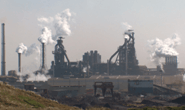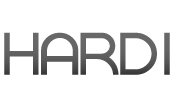Steel Products
Top Trends Driving the Internet of Things in 2018
Written by Tim Triplett
February 2, 2018
Driven by the need for intelligent connected devices in industrial and commercial applications, the number of connected Internet of Things (IoT) devices globally will grow to more than 31 billion in 2018, according to new analysis from business information provider IHS Markit. The commercial and industrial sector, powered by building automation, industrial automation and lighting, is forecast to account for about half of all new connected devices between 2018 and 2030.
“The IoT is not a recent phenomenon, but what is new is it’s now working hand in hand with other transformative technologies like artificial intelligence and the cloud,” said Jenalea Howell, research director for IoT connectivity and smart cities at IHS Markit. “This is fueling the convergence of verticals such as industrial IoT, smart cities and buildings, and the connected home, and it’s increasing competitiveness.”
In its latest IoT Trend Watch report, IHS Markit identifies four key trends that will impact the IoT this year and beyond:
- Innovation and competitiveness: The IoT opportunity has attracted numerous duplicative and overlapping wireless solutions such as Bluetooth, Wi-Fi, 5G, NB-IoT, LoRa and Sigfox. Standards consolidation lies ahead, but confusion and fragmentation will dominate in the near term. Enterprises are leveraging the location of data as a competitive advantage — and as a result, a hybrid approach to cloud and data center management is taking hold. More companies will employ both on-premises data centers and off-premises cloud services to manage their IT infrastructure.
- Business models: 5G builds upon earlier investments in M2M (machine-to-machine) and traditional IoT applications, enabling significant increases in economies of scale that will drive adoption and utilization across all sectors of industry. 2018 will bring increased focus on compute capabilities and enhanced security for cellular IoT gateways.
- Standardization and security: IoT deployments face critical cybersecurity risks because there are potentially many more IoT devices to secure compared to traditional IT infrastructure devices. Despite the promise it holds, blockchain — a technology for securely storing and transferring data — is not a panacea. Initially, IoT applications for blockchain technology will focus on asset tracking and management.
- Wireless technology innovation: IoT platforms are becoming more integrated. Currently, there are more than 400 IoT platform providers. Many vendors are using integration to compete more effectively, providing highly integrated functionality for IoT application developers and adopters. Significant innovation will occur when IoT app developers can leverage data from myriad deployed sensors, machines and data stores. A key inflection point for the IoT will be the gradual shift from the current “Intranets of Things” deployment model to one where data can be exposed, discovered, entitled and shared with third-party IoT application developers.
IHS Markit (www.ihsmarkit.com) provides insight and analysis for more than 25 connectivity technologies in 34 application segments used for the IoT.
{loadposition reserved_message}

Tim Triplett
Read more from Tim TriplettLatest in Steel Products

CRU: US rebar and wire rod prices rise alongside S232 increase
CRU Senior Steel Analyst Alexandra Anderson discusses current market and pricing dynamics for long steel products in the US.
CRU: Excessive global supply could hit rebar mill investments in US
Following the onset of the war in Ukraine in March 2022, concerns about import availability and expectations of rising demand from President Biden’s Infrastructure Bill pushed US rebar prices to record highs. In response, a flurry of new mills and capacity expansions were announced to meet the rise in demand from growth in the construction […]

Steel buyer spirits tempered by soft spot market conditions
Steel sheet buyers report feeling bogged down by the ongoing stresses of stagnant demand, news fatigue, tariff negotiations or implementation timelines, and persistent macroeconomic uncertainty.

CRU: US stainless prices to rise on expanded S232 tariffs
Stainless prices in the US market will rise, following price increases by major US producers. Our base case scenario incorporates higher US prices in the near term, despite the initial negative reaction by the market. US stainless prices will go up in 2025 H2 and will stay elevated in 2026 as tariffs on stainless […]

Galvanized steel demand unsteady amid lingering buyer fatigue: HARDI
Uneven demand for galvanized steel in June reflects a market that remains mired in uncertainty, according to industry sources.
